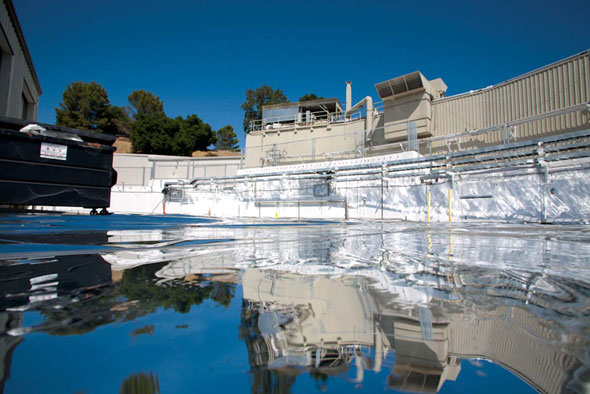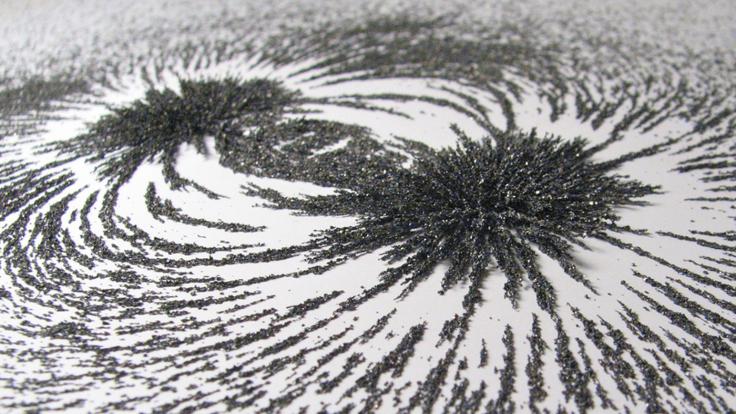Sunscreen for an accelerator
 |
| Photo: Bradley Plummer, SLAC |
A visitor wandering around SLAC last July would be forgiven for thinking the hot California sun had triggered a mirage.
A parking lot at the Stanford Synchrotron Radiation Lightsource had transformed into a glistening lake—albeit one made of thin, reflective sheets of aluminized Mylar. Attached to the asphalt with screws and duct tape, the polyester film created a 13,500-square-foot, 0.05-millimeter-deep "pool" that rippled with the wind and reflected sunlight with such strength that onlookers had to wear green welding glasses.
Mylar, commonly used to keep emergency victims warm, had a decidedly different purpose at SSRL: to protect the accelerator from the sun.
"We're hoping that by reflecting the sun's rays away from the tarmac, we can reduce beam instability at SSRL," says SSRL mechanical systems supervisor Ben Scott, who oversaw the installation project.
Researchers theorized that as the sun's rays heat the asphalt, it expands and presses against the concrete slabs under the accelerator, upsetting beam alignment.
SSRL creates extremely bright X-rays that are often used to investigate the properties of atoms and molecules. The small targets and precise nature of the research make beam alignment and stability essential.
"We are now sensitive to motion at the micron-per-meter level," says beamline development group leader Tom Rabedeau. That means a ground shift as small as one seventy-fifth the thickness of a piece of paper across a one-meter stretch of concrete can throw off the beam.
Scientists first noticed this shifting because the beam stability increased on cloudy days. "We thought that the clouds were regulating the temperature of the asphalt, keeping it cool during the day and warm at night, and limiting its motion," Rabedeau says.
Early analysis suggests that, despite its aesthetic appeal, the Mylar is having little effect. The analysis also suggests that the motion of the concrete slabs is closely related to temperature variations in the accelerator's tunnel walls.
"More data and more analysis are needed to say for sure," Rabedeau says. "This is really a very complicated—and interesting—environment."
Kelen Tuttle
Click here to download the pdf version of this article.






